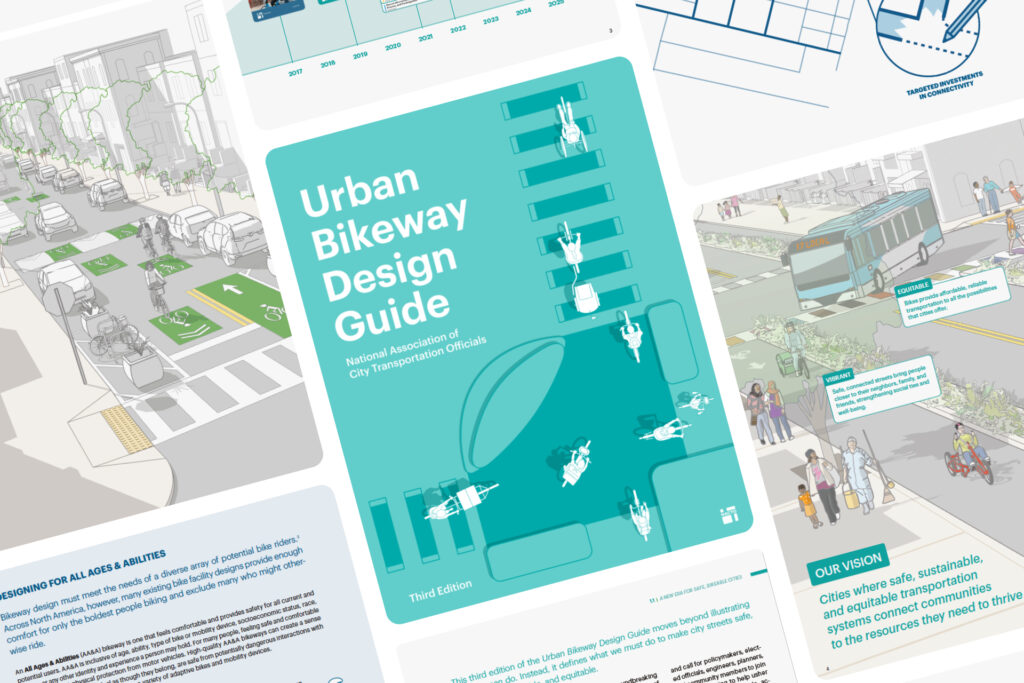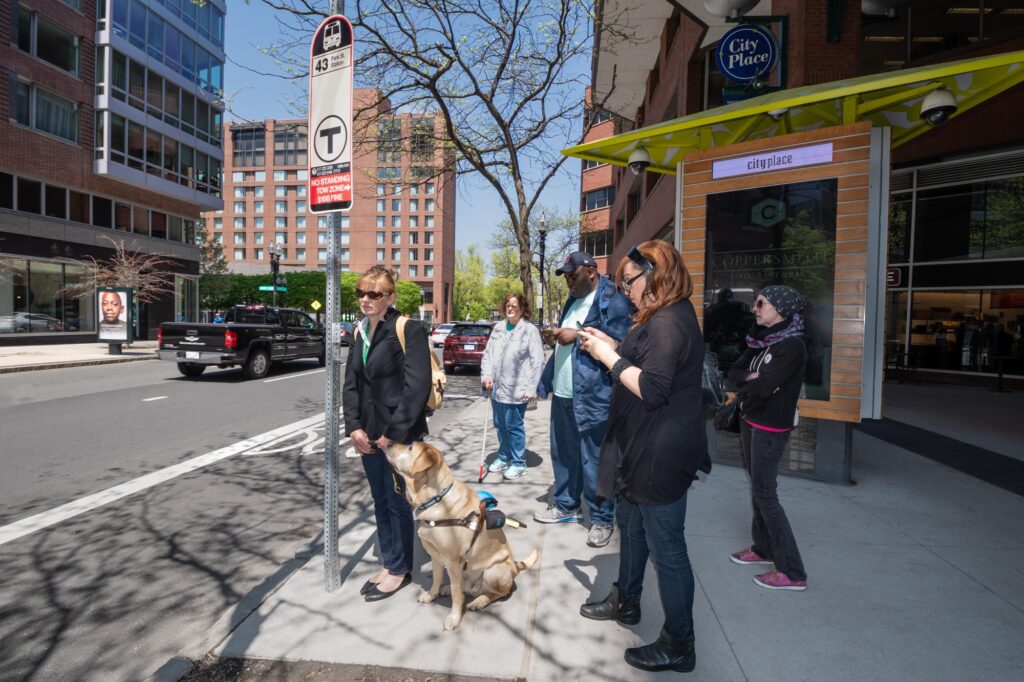New York, NY, December 18, 2013
Less than two months after National Association of City Transportation Officials (NACTO) President and NYC Department of Transportation (DOT) Commissioner Janette Sadik‐Khan kicked off a nationwide endorsement campaign for the Urban Street Design Guide, Washington State DOT and a group of 23 cities have led the charge with strong support for the groundbreaking new manual.
With their statewide endorsement, the Washington State Department of Transportation (WSDOT) officially becomes the first State DOT to endorse the NACTO Urban Street Design Guide. “The low-cost innovations, interim solutions and improvements outlined in the Guide support WSDOT’s practical design emphasis,” said Washington State Transportation Secretary Lynn Peterson. “This is a resource that helps us meet the mobility, livability and economic development needs of Washington’s communities.”
“Secretary Peterson and Washington State DOT are leaders in the field of safer, community-friendly streets,” said NACTO President Janette Sadik-Khan “This endorsement is good news for Seattle and other cities and communities across the state and NACTO looks forward to working with them to implement the Street Design Guide.”
“Support from all levels of government is essential to achieving this vision for better city streets,” said Linda Bailey, NACTO Executive Director. “We’re encouraged by Washington State DOT’s commitment to flexible urban street design, and hope that their leadership will prompt other State DOTs to review and endorse the Urban Street Design Guide.”
Prior to Washington State DOT’s endorsement of the Street Design Guide, the Federal Highway Administration officially endorsed the NACTO Urban Bikeway Design Guide, the precursor to the Street Design Guide, through an agency-wide memorandum in late August 2013. While the Bike Guide has been officially adopted by both the Georgia DOT and the Massachusetts DOT, Washington is the first state to express this level of support for the Urban Street Design Guide, which encompasses street design guidelines for all modes.
Noting the importance of strong government partnerships for transportation planning, Seattle Department of Transportation Director Peter Hahn said that SDOT will collaborate with WSDOT to incorporate the Guide into their design guidance documents and standard practices. “The Urban Street Design Guide is consistent with Seattle’s goals and policies in that it offers a concrete vision for improving the safety and livability of our streets for all users,” said Hahn. “Many Seattle initiatives align with this design guidance, including complete streets implementation, the Pedestrian Master Plan update, and the Public Space Management Program to support better use of under-utilized public space.”
Transportation officials and/or mayors representing the following cities have signed letters of endorsement for the Urban Street Design Guide: Arlington, Atlanta, Baltimore, Boston, Charlotte, Chattanooga, Chicago, Denver, Indianapolis, Louisville, New York, Oakland, Philadelphia, Phoenix, Portland, Salt Lake City, San Diego, San Francisco, Seattle, Somerville, and Tacoma. Further cementing their cities’ endorsement, the City Councils of both Austin and Hoboken passed resolutions supporting the Urban Street Design Guide. In a unanimous vote, Hoboken City Councilmembers agreed that the “NACTO Urban Street Design Guide employs best practices in designing urban streets that are safe, sustainable, resilient, multi-modal, and economically beneficial.” Austin City Council indicated that the Guide provides “important information and best practices to effectively propel Austin towards its goals of multi-modalism and placemaking, as laid out in the Imagine Austin Comprehensive Plan.”
In his letter of endorsement, San Francisco Transportation Director and NACTO President-Elect Ed Reiskin said, “The challenge for San Francisco’s streets to safely accommodate current and future residents, workers and visitors within limited space requires a unique approach. The Urban Street Design Guide is consistent with the goals outlined in San Francisco’s Better Streets Plan and Pedestrian Strategy, part of the City’s broader effort to make San Francisco the most walkable city in North America.”
Wylie Bearup, City of Phoenix Street Transportation Director and NACTO Secretary, noted the Guide’s applicability to cities in all stages of development. “The Guide’s real success is its ability to serve as a roadmap for revitalizing older streetscapes. Cities of all sizes grappling with the challenge of making the transition to a complete street design that is safe, comfortable and enjoyable for all users will be greatly aided by the Guide’s interim design strategies and exhaustive examination of all streetscape elements, from sidewalks and speed humps to best practices for planning intersections.”
The endorsement campaign for the Urban Street Design Guide will run through May 1, 2014. Letters of endorsement and city council resolutions supporting the Guide are available on NACTO’s website at nacto.org/urban-street-design-guide-endorsement-campaign/. Cities, states and counties interested in endorsing the Guide should contact David Vega-Barachowitz, Director of the Designing Cities initiative, at [email protected] or 646.628.3337.
###
About NACTO
NACTO is an association of 30 US cities formed to exchange transportation ideas, insights and practices and cooperatively approach national transportation issues. Members include Atlanta, Baltimore, Boston, Charlotte, Chicago, Denver, Detroit, Houston, Los Angeles, Minneapolis, New York, Philadelphia, Phoenix, Portland, San Diego, San Francisco, Seattle and Washington, DC. Affiliate members of NACTO include Arlington (VA), Austin, Burlington (VT), Cambridge, Hoboken, Indianapolis, Louisville, Memphis, Oakland, Salt Lake City, Somerville (MA), and Ventura (CA).
Released in September 2013, NACTO Urban Street Design Guide (nacto.org/usdg) charts the principles and practices of the nation’s foremost engineers, planners, and designers working in cities today. A blueprint for designing 21st century streets, the Guide unveils the toolbox and the tactics cities use to make streets safer, more livable, and more economically vibrant. The Guide outlines both a clear vision for complete streets and a basic road map for how to bring them to fruition.


